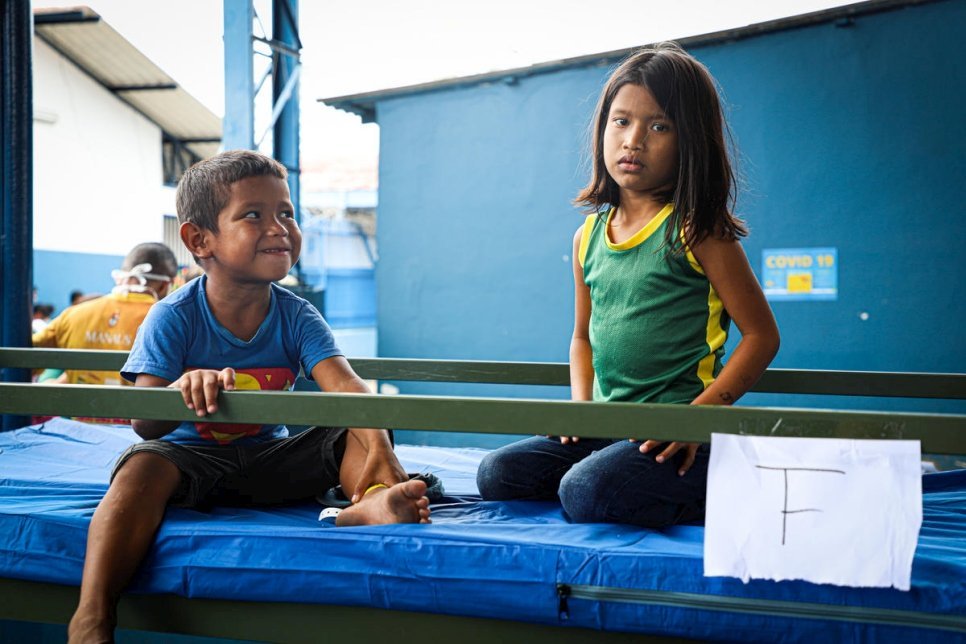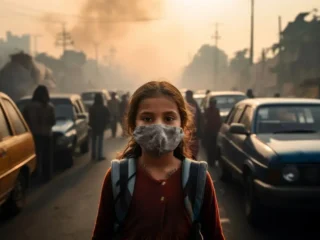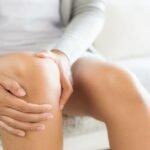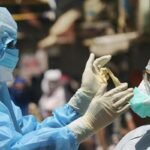Indigenous people in Latin America have been decimated by the coronavirus pandemic due to weak immune systems and centuries of state neglect.
The threat posed to indigenous communities was highlighted last week with the virus death of Brazilian chief Paulinho Paiakan, an iconic defender of the Amazon rainforest, which is home to 420 indigenous communities.
Paiakan’s death in a hospital in the north of Brazil was one of more than 300 amongst the country’s 100 indigenous communities, according to the Articulation of the Indigenous Peoples of Brazil (APIB) group. That was five times as many deaths as in the whole of 2019.
The APIB accuses the government of far-right Brazilian President Jair Bolsonaro of having “done nothing” to prevent the relentless spread of coronavirus in areas where 750,000 indigenous people live. So far, more than 5,300 have been infected.
Brazil is the second-worst-hit country in the world, with more than a million infections and over 50,000 deaths from COVID-19.
It has become the second country, after the US, to register more than 50,000 deaths from Covid-19.
It comes amid growing political tension and just days after the country confirmed more than one million coronavirus infections.
President Jair Bolsonaro’s decision to oppose lockdowns and focus on the economy has been hugely divisive.
Two health ministers – both doctors – have left their posts as deaths and infections have surged. The first was sacked by Mr Bolsonaro, the second resigned after disagreeing with the far-right president.
The WHO says that, of the 183,000 new cases reported globally in 24 hours, more than 60% were from North and South America.
Mexico, Peru and Chile have been particularly badly hit, aside from the US, and on Sunday Argentina passed 1,000 deaths.
Indigenous population is one of the most socially vulnerable groups in the world
The indigenous population is one of the most socially vulnerable groups in the world. There are a number of instruments that recognize their rights and provide protection due to this status.
The United Nations has made numerous observations, expressing concern at the higher levels of morbidity and mortality in this population and highlighting the “cumulative and more intense harm” experienced by indigenous peoples. (ECLAC).
“Past” epidemics continue to pose a threat to communities today, as exemplified by tuberculosis, which has a high prevalence in indigenous communities.
“Introduced contagious infectious diseases have already caused a serious health problem among indigenous peoples already due to the high prevalence of such diseases and very poor health services. Coronavirus would further aggravate this situation,” says Peruvian anthropologist Beatriz Huertas.
Degree of vulnerability of certain populations
The impact of crises highlights the degree of vulnerability of certain populations: in addition to having poorer living conditions, they are more sensitive to the impacts of crises. Some preliminary analyses already calculated that the COVID-19 crisis is having a major effect on inequality, since it has a more burdensome impact on the low-income population.
In most respects, the situation of indigenous peoples in particular is much worse than that of other, non-indigenous people who share similar characteristics, such as level of education, age, place of rural or urban residence, type of work and household. This points to the existence of barriers that affect them in a distinct and exclusionary manner.
A useful precedent is the impact of the H1N1 flu virus, which was much greater on indigenous communities in New Zealand, Australia and Canada. While figures for Latin America are unclear, mortality from influenza and H1N1 was between four and seven times higher in indigenous populations. This is because factors such as poor access to sanitation, and overcrowding increase morbidity, and poor health exposes this population to a high risk of mortality during epidemics.
There are as yet few cases of infection with the virus in indigenous people, but there is still deep concern about the progress of the virus. Several communities have decided to isolate themselves, and they have called on governments to prevent outsiders from entering their communities.
This has also been the recommendation of some doctors and anthropologists. While concern has been expressed about the economic impact, the health consequences of the pandemic could destroy already very fragile communities.







